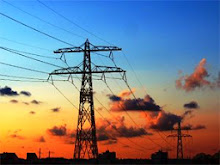A consortium of fabricators Davy Markham and Metalcraft, AMEC and The Welding Institute are to bid to build €5bn vacuum sections for the international fusion project, to be based in Cadarache, France.
The International Tokamak Experimental Reactor (ITER) is an international cooperative programme that aims to build a working 500MW fusion reactor.
Europe and Korea will build the ITER vacuum vessel, consisting of nine D-shaped vacuum vessel sectors - Europe will build sevan and Korea two.
Each section will weigh some 450 tons, its external diameter will measure 19.4m, with an internal diameter of 6.5m. Once assembled, the entire structure will be 11.3 m high.
Fabrication tolerances for the whole vessel, including field assembly, are expected to be less than 20mm for both height and width. When all the vacuum vessel’s shielding and port structures are included, it will weigh in excess of 5000t.
Managing Director of Sheffield-based Davy Markham, Kevin Parkin, explains: “ITER represents an exciting business opportunity for ourselves and the rest of UK engineering. The vacuum vessel is a significant engineering challenge that no single company is capable of supplying.
“So we’ve put a consortium together with fabrication specialist Metalcraft, AMEC providing design and programme management services, and The Welding Institute offering technical support, to enable us to present a solid technical and commercial case,” he said.
The key technical challenge for the ITER project is to meet demanding accuracies in assembling the vessels and minimising metal shrinkage, requiring the use of electron beam welding, which The Welding Institute is expert.
UKAEA’s Fusion and Industry Manager Dan Mistry is responsible for encouraging UK companies to supply the ITER project and he comments, "ITER is a challenging undertaking that presents many business opportunities for UK companies. I would like to encourage companies, especially those with heavy/medium engineering capabilities that have relevant skills and experience, to get involved with the ITER consortium,” he said.
Fusion power will involve the combination of atomic nucleii to produce heat.
A plasma of deuterium and tritium (two isotopes of hydrogen) is mixed at 100M°C. At this temperature, they fuse to create helium and neutrons. Vast quantities of heat is released, used to produce electricity in the conventional way.
ITER is a joint venture between the European Union, the People’s Republic of China, India, Japan, the Republic of Korea, the Russian Federation, and the United States of America.
Contracts for the ITER vacuum vessel are likely to be placed during 2009 / 2010.
“So we’ve put a consortium together with fabrication specialist Metalcraft, AMEC providing design and programme management services, and The Welding Institute offering technical support, to enable us to present a solid technical and commercial case,” he said.
The key technical challenge for the ITER project is to meet demanding accuracies in assembling the vessels and minimising metal shrinkage, requiring the use of electron beam welding, which The Welding Institute is expert.
UKAEA’s Fusion and Industry Manager Dan Mistry is responsible for encouraging UK companies to supply the ITER project and he comments, "ITER is a challenging undertaking that presents many business opportunities for UK companies. I would like to encourage companies, especially those with heavy/medium engineering capabilities that have relevant skills and experience, to get involved with the ITER consortium,” he said.
Fusion power will involve the combination of atomic nucleii to produce heat.
A plasma of deuterium and tritium (two isotopes of hydrogen) is mixed at 100M°C. At this temperature, they fuse to create helium and neutrons. Vast quantities of heat is released, used to produce electricity in the conventional way.
ITER is a joint venture between the European Union, the People’s Republic of China, India, Japan, the Republic of Korea, the Russian Federation, and the United States of America.
Contracts for the ITER vacuum vessel are likely to be placed during 2009 / 2010.
Source: The New Civil Engineer



No comments:
Post a Comment